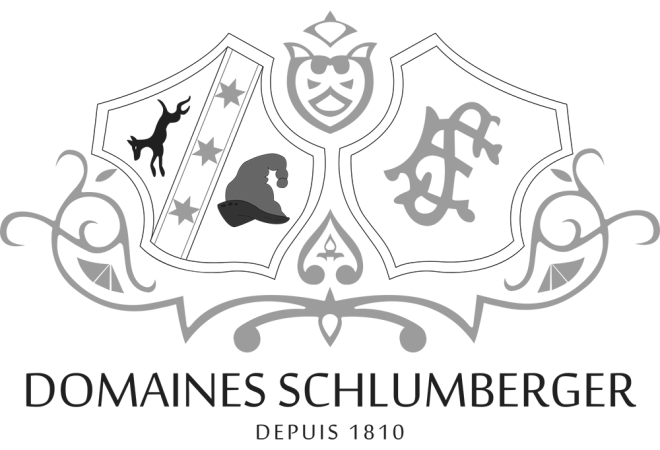Domaines Schlumberger Riesling Grand Cru Saering
Alsace, France
Vintage:2019 (Past)
Tech Sheet Download Download PDF with Scores Download PDF without Scores

- W&S
- WS
- JR
Reviews
JancisRobinson.com
17.5/20 Points
August 9, 2022, Julia Harding MW
“This has the more creamy richness of an Alsace Riesling (compared with most German Rieslings, generalisation alert), more creamy than stony/mineral notes, and it is already showing some evolution and thus aromatic complexity along with the citrus-lime fruit. A touch of kerosene-like tertiary flavour. This has the texture that makes it slightly chewy and mouth-filling, and has the fruit intensity for a really substantial wine. Very deep and very long.”
Wine & Spirits
91 Points
August 1, 2021, Josh Greene
“Racy, ricey and rich in yellow fruit, from apple to plum to lemon, this is a clean, linear riesling with talc-like minerality keeping it tightly focused. It’s youthful and needs bottle age to develop its breadth of flavor.”
Wine Spectator
90 Points
June 2021, Alison Napjus
“This light-bodied white crackles with tangy acidity, showing aromas and flavors of Meyer lemon peel and verbena layered with the crunchy green apple and wet stone notes. Drink now through 2025.”
Overview
With a single holding of more than 330 acres at Guebwiller, Domaines Schlumberger is the largest Grands Crus producer in Alsace. All Schlumberger wines are estate-grown. Seventy-five percent of the vines are planted on very steep, terraced slopes, requiring horses be used for fieldwork.
The outstanding quality of the wines is due largely to Schlumberger’s superior vineyards, but also because yields are deliberately kept low. The winery produces only 80,000 cases annually, while the law allows for up to 160,000.
First mentioned in 1250, the Saering plot slips from the hill and extends like a peninsula on the plain, forming a sort of tongue of land in the form of a ring. It has been sold under its own since 1830. To the north of Guebwiller, Saering faces east and south-east at an altitude of ranging from 260 to 300 meters. The Saering marl, limestone, and sandstone terroir brings out the best in this magnificent, fine, delicate Riesling.
Winemaking
The grapes were harvested by hand and the bunches were pressed whole. Static settling of the lees occurred. Fermentation took place in temperature-controlled tuns between one and four months. The wine was raised on the lees for eight months.
Tasting Notes
The robe is lemon yellow with light green reflections of good intensity. The disk is bright, limpid and transparent. The wine shows youth. The nose is marked, pleasant and of good intensity. We perceive a dominant of citrus fruits, (mandarin zest, lemon, crystallised orange), white flowers and a light ferruginous, bloody touch. The airing enhances these scents and reveals smoky, flinty notes and spices (ginger). The nose is open and has already a mineral hint. The perfect ripeness of the grapes expresses a splendid terroir profile. The onset in the mouth is fleshy and the alcoholic base full-bodied. The wine evolves on a rigorous medium, marked by a delicate salinity and a sparkling note. Aromas are more austere, first dominated by mineral (flint, naphta) then by citrus fruits (yuzu zest, lime), white flowers and spices (ginger). There is a significant mineral bitterness. That balance is remarkable! Despite the exposure to sunlight, the Riesling extraordinarily emphasises the soil. With its noble bitterness, this wine is made for decades.
Food Pairing
Pairs beautifully with tempura calamari with crispy vegetables, an Asian-flavored salmon fillet, a lobster tail with citrus fruit, as well as a goat’s milk cheese. Serve at the suggested temperature of 54°F.
Technical Information
Varietals: 100% Riesling
Wine Alcohol: 14.2%
Titratable Acidity: 5.27 g/L
Residual Sugar: 2.1 g/L
